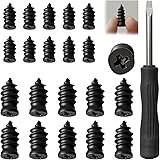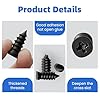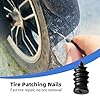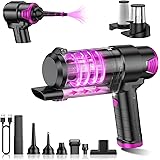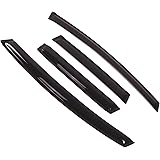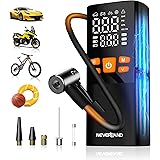Table of Contents
Air/Fuel Ratio (AFR) Monitors are essential tools for car enthusiasts and mechanics. They help you keep track of your vehicle’s engine performance by measuring the ratio of air to fuel in the combustion mixture.
The AEM (30-4110) UEGO Air/Fuel Ratio Gauge is a popular choice among users. This gauge provides real-time AFR readings, helping you ensure your engine runs efficiently and safely.
Many users have shared their experiences with the AEM UEGO Gauge. One user mentioned that after upgrading their fuel system, the gauge helped them identify a faulty MAP sensor, saving them from potential engine damage.
Another user praised the gauge for its smooth LED display and easy readability in all lighting conditions. They found the installation straightforward, thanks to the clear instructions and online videos.
Introduction to the AEM (30-4110) UEGO Air/Fuel Ratio Gauge

The AEM (30-4110) UEGO Air/Fuel Ratio Gauge is a high-quality tool designed to help car enthusiasts monitor their vehicle’s air/fuel ratio. This gauge is particularly useful for those who have upgraded their fuel systems or are looking to optimize engine performance. With an easy installation process and customizable features, this gauge stands out as a reliable choice for many users.
Key Features of the AEM UEGO Gauge

One of the standout features of the AEM UEGO Gauge is its interchangeable black and white faceplates, allowing users to customize the appearance to match their vehicle’s interior. Additionally, it comes with a Bosch 4.9 LSU wideband sensor and a weld-in bung, ensuring accurate readings and easy installation. The gauge does not require free air sensor calibration, making it hassle-free for users.
Ease of Installation

The AEM UEGO Gauge is designed to fit in most gauge pods with its 2-1/16 inch housing, making installation straightforward. Users have found the installation process to be simple, especially with the help of online video tutorials. The included wiring and connectors are of high quality, ensuring a secure and reliable setup.
Performance and Accuracy

Users have praised the AEM UEGO Gauge for its quick response time and accurate readings. The LED display is clear and easy to read under various lighting conditions, making it a practical choice for daily driving or track use. The gauge’s ability to provide real-time data helps users make informed decisions about their vehicle’s performance.
Customization Options

The AEM UEGO Gauge offers customization options with interchangeable black and silver bezels, allowing users to match the gauge to their vehicle’s interior. This flexibility ensures that the gauge not only performs well but also looks great in any setup. The ability to choose between different colors and styles adds a personal touch to the installation.
Durability and Reliability

Constructed from high-quality materials, the AEM UEGO Gauge is built to last. Users have reported that the gauge performs consistently well over time, even in demanding conditions. The included Bosch sensor is known for its durability, providing long-lasting performance without the need for frequent replacements.
User Reviews and Feedback

The AEM UEGO Gauge has received positive feedback from users, with many highlighting its ease of installation and accurate readings. Some users have experienced issues with the O2 sensor, but overall, the gauge is well-regarded for its performance and reliability. The majority of reviews suggest that this gauge is a great investment for anyone looking to monitor their air/fuel ratio.
Common Issues and Troubleshooting

Some users have reported issues with faulty O2 sensors, which can impact the gauge’s performance. However, these issues are often resolved through warranty replacements or purchasing a new sensor. It’s essential to follow the installation instructions carefully and ensure all connections are secure to avoid potential problems.
Comparison with Other Gauges
When compared to other air/fuel ratio gauges on the market, the AEM UEGO Gauge stands out for its reliability and ease of use. While some cheaper alternatives may offer similar features, they often lack the build quality and accuracy of the AEM gauge. Investing in a trusted brand like AEM ensures that you get a product that performs well and lasts longer.
Final Thoughts
Overall, the AEM (30-4110) UEGO Air/Fuel Ratio Gauge is a solid choice for anyone looking to monitor their vehicle’s air/fuel ratio. Its combination of accurate readings, easy installation, and customization options make it a popular choice among car enthusiasts. While there may be some minor issues with the O2 sensor, the gauge’s overall performance and reliability make it a worthwhile investment.
Pros:
- The gauge comes with interchangeable faceplates and bezels, allowing for a customized look.
- It includes a Bosch 4.9 LSU wideband sensor and weld-in bung, eliminating the need for a free air sensor calibration.
- The 0-5V analog output and 10-20 AFR range provide accurate readings for tuning purposes.
Cons:
- Some users reported receiving faulty O2 sensors, which required replacement.
- The gauge’s power wiring pigtail could be longer for easier installation.
- The display can be overly responsive, making it harder to read consistent values.
Conclusion
The AEM UEGO Air/Fuel Ratio Gauge is a reliable tool for monitoring your engine’s performance. It comes with interchangeable faceplates and bezels, allowing you to customize its appearance.
While some users have reported issues with the O2 sensor, the overall feedback is positive. The gauge’s quick response time and accurate readings make it a valuable addition to any vehicle.
Questions & Answers:
Question: Is the AEM UEGO Air/Fuel Ratio Gauge easy to install?
Answer: Yes, many users find the installation process straightforward, especially with the help of online tutorials.
Question: Do I need to calibrate the sensor before using it?
Answer: No, the AEM UEGO Air/Fuel Ratio Gauge does not require a free air sensor calibration.
Question: What should I do if the gauge shows incorrect readings?
Answer: Check if the issue might be related to a faulty O2 sensor or other components like the MAP sensor, which can affect readings.
{"@context":"http://schema.org","@type":"Product","@id":"#B00N3VGPYS","url":"https://flawlesscarguide.com/?p=13425","name":"AEM UEGO Air/Fuel Ratio Gauge","description":"Read our review of the AEM UEGO Air/Fuel Ratio Gauge to understand its features and user experiences.","brand":{"@type":"Brand","name":"AEM","image":"https://flawlesscarguide.com/wp-content/uploads/2024/10/121020241728776367.webp"},"image":{"@type":"ImageObject","url":"https://flawlesscarguide.com/wp-content/uploads/2024/10/121020241728776367.webp","height":"500","width":"500"},"offers":{"@type":"AggregateOffer","availability":"InStock","itemCondition":"NewCondition","price":"","priceCurrency":"USD","url":"https://flawlesscarguide.com/?p=13425","priceValidUntil":"2025-10-12T23:39:33Z","highPrice":"","lowPrice":"","offerCount":"1","seller":{"@type":"Organization","name":""},"priceSpecification":{"@type":"priceSpecification","valueAddedTaxIncluded":""}},"aggregateRating":{"@type":"AggregateRating","ratingValue":"4.0","reviewCount":"2526"},"review":[{"@type":"Review","positiveNotes":{"@type":"ItemList","itemListElement":[{"@type":"ListItem","position":1,"name":"The gauge comes with interchangeable faceplates and bezels, allowing for a customized look."},{"@type":"ListItem","position":2,"name":"It includes a Bosch 4.9 LSU wideband sensor and weld-in bung, eliminating the need for a free air sensor calibration."},{"@type":"ListItem","position":3,"name":"The 0-5V analog output and 10-20 AFR range provide accurate readings for tuning purposes."}]},"negativeNotes":{"@type":"ItemList","itemListElement":[{"@type":"ListItem","position":1,"name":"Some users reported receiving faulty O2 sensors, which required replacement."},{"@type":"ListItem","position":2,"name":"The gauge's power wiring pigtail could be longer for easier installation."},{"@type":"ListItem","position":3,"name":"The display can be overly responsive, making it harder to read consistent values."}]},"author":{"@type":"Person","name":"Flawlesscarguide.com"},"datePublished":"2024-10-12","description":"Many users have shared their experiences with the AEM UEGO Gauge. One user mentioned that after upgrading their fuel system, the gauge helped them identify a faulty MAP sensor, saving them from potential engine damage."}]}{"@context":"https://schema.org/","@type":"FAQPage","mainEntity":[{"@type":"Question","name":"Is the AEM UEGO Air/Fuel Ratio Gauge easy to install?","acceptedAnswer":{"@type":"Answer","text":"Yes, many users find the installation process straightforward, especially with the help of online tutorials."}},{"@type":"Question","name":"Do I need to calibrate the sensor before using it?","acceptedAnswer":{"@type":"Answer","text":"No, the AEM UEGO Air/Fuel Ratio Gauge does not require a free air sensor calibration."}},{"@type":"Question","name":"What should I do if the gauge shows incorrect readings?","acceptedAnswer":{"@type":"Answer","text":"Check if the issue might be related to a faulty O2 sensor or other components like the MAP sensor, which can affect readings."}}]}














